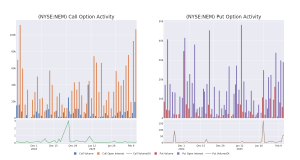
The scariest thing about retirement is saying goodbye to a steady paycheck. The good news? You can turn your nest egg into a salary.
↑
X
How Do Your Retirement Savings Compare To The U.S. Average?
Retirement experts recommend that you cover essential monthly expenses like rent, gas, food and utilities with guaranteed income. Income streams, such as Social Security or a pension, may not cover everything, though. If not, smart planning can turn your 401(k) into a source of cash-flow.
Tap Your Retirement Account
Most people built up wealth in their 401(k). Create a portfolio withdrawal strategy that generates the amount of income you need each month.
“This traditional method of withdrawals from a diversified portfolio is an old-school approach,” said Jim Elios, founder of Elios Financial Group. “I don’t like structuring income replacement entirely with fixed income or annuities. You need some equities for growth to keep up with inflation.”
The goal is to take systematic withdrawals, say 4% of your portfolio of stocks and bonds each year, to supplement your income. The “4% rule” is a common distribution target, as it adjusts for inflation each year and is designed to make your nest egg last 30 years.
Some Cash Has Perks For Retirement
Given the current plump 4% yields on cash, Elios recommends parking the cash you raise in a money-market fund. And then you draw on that fund monthly to cover expenses.
Ideally, “You want to be selling (to raise funds) when markets are strong,” said Elios. If the stock market is under pressure, Elios trims from the less volatile fixed-income portion of the portfolio, which should include core holdings like investment-grade bonds and higher-yielding junk bonds.
Elios also recommends having six months to a year’s worth of expenses in a money-market account. That enables you to pay bills and temporarily suspend distributions from retirement accounts in major down markets.
Convert 401(k) Into Annuity
Figuring out how to take retirement plan distributions to create income for life, though, isn’t everyone’s strong suit, says David Lau, founder and CEO of DPL Financial Partners.
Lau says annuities can act as an income building block in retirement similar to Social Security. An annuity is a contract you enter with an insurance company to provide guaranteed income in exchange for a payment or series of payments.
Most workers don’t get a traditional pension at work. An annuity is a product that is akin to a “personal pension,” said Lau, whose firm helps financial advisors and investors find low-cost commission-free annuities. You can fund annuities with retirement account funds without incurring any taxes or penalties if the rollover meets IRS guidelines.
There are three types of annuities, says Lau. The simplest is the single premium immediate annuity, or SPIA. You pay a lump sum of money up front to an insurance company in return for a steady, guaranteed paycheck. You can choose the type of payout you want, whether it’s for a certain number of years or for life or your spouse’s life.
Currently, a 65-year-old who wants $48,000 a year in income, or $4,000 a month, would need to pay the insurer a lump sum of $630,000, according to Lau.
Choosing Your Annuity
The most common annuity used by savers is the fixed indexed annuity, or FIA. This type of annuity pays a fixed interest rate depending on the performance of an index, such as the S&P 500. It has growth potential, and your money grows tax-free until you start making distributions.
A 60-year old buying an FIA with the goal of $48,000 a year in income who defers income until age 65, would require a lump-sum payment of $450,000.
FIA’s are attractive to retirees because the interest earned is based on how an index performs up to a preset cap on the upside, say 5%, for example. More important, that cap allows the insurer to provide full protection against losses if the index declines. “Your downside is completely protected,” said Lau. “They put a zero floor on it, meaning you can’t lose money.”
Put In A Floor To Your Income
If the S&P 500 gains 10%, or more than the 5% cap, for example, you’ll earn just 5%. If the S&P 500 is up but earns less than the cap, you’ll earn the index return. But your annuity won’t lose value if the index goes down in value, although you won’t earn any interest, either.
“Capital appreciation isn’t your goal,” said Lau. “Your goal is to grow your assets like fixed income and protect them and get ready to turn it into a paycheck.” Just like Social Security, your FIA payouts are larger if you delay taking income payments at an older age.
The third type of annuity is a registered indexed annuity (RIA), which is similar to the fixed indexed annuity, but offers different types of downside “buffers” in exchange for more upside potential. Typically, RIA’s offer 10% downside protection, which means if you’re invested in the S&P 500 and it goes down 8%, you lose nothing. If it falls 12%, you lose 2%, Lau explains.
Generate Income With Bonds And Bond Funds
Another strategy is to rely on bonds and let this income-producing asset throw off income, says Falko Hoernicke, senior portfolio manager at U.S. Bank Private Wealth Management.
He advises a conservative portfolio of 50% stocks and 50% bonds. Use the yields earned on the bonds to generate a steady retirement income stream. “The good news now is that bonds throw off a very good coupon,” said Hoernicke.
Hoernicke recommends that half of a bond allocation be invested in investment grade corporate bonds. Companies with good credit ratings and low risk of default issue these bonds. “You want to have a good amount of money in these very secure bonds,” said Hoernicke. Add to that bonds whose return and risk characteristics are different and offer fatter yields, such as high-yield bond funds, which offer yields as high as 7.5%.
If you invest in a diversified bond portfolio you can likely earn 4% on your money, which can be used as income. “This income-generating component of the 50/50 portfolio fills the income gap,” said Hoernicke. The S&P 500 provides a dividend yield of roughly 1.2%, but the equity component of the portfolio is really about growing your money over time so you outrun inflation, says Hoernicke.
Use Stocks To Produce Income For Retirement
It’s counterintuitive to consider stocks as an income-producing source for retirement. But there’s an argument for stocks, better known for their growth potential than their income-generating traits. “More and more (investors) are looking to the equity markets to build at least a portion of the income they need in retirement,” said Kieran Kirwan, senior investment strategist at ProShares, a leading ETF provider.
One strategy is to invest in companies with a long history of increasing their dividend payouts. So-called Dividend Aristocrats, or S&P 500 companies that have boosted their dividend payouts every year for the last 25 consecutive years, are a good place to start.
ProShares S&P 500 Dividend Aristocrats ETF (NOBL), for example, provides exposure to 69 big-cap stocks that have been raising their dividends for a quarter century or more. These increases mean investors will earn more from dividends each year. They also means investors are getting exposure to established, stable companies with some sort of competitive advantage.
“It signals quality,” said Kirwan. “The magic happens when you look at what happens to the growth of the income stream over time.” Kirwan says NOBL has boosted its payout at a compound rate of 10% per year since the fund’s 2013 inception. The fund has generated annualized total returns of 9.59% over the past 10 years, according to Morningstar Direct.
Don’t Forget Value
John Buckingham, editor of the Prudent Speculator investment newsletter, favors value stocks to generate income for people’s golden years. The reason: As people live longer and need their money to last longer, they benefit from the one-two punch of dividends and capital gains that undervalued stocks deliver over time.
It’s quite possible to build a portfolio of value stocks that yield 2.5% to 3%. Sure, value stocks are more volatile than money market funds or bonds. But Buckingham stresses that value funds have never lost money over a 15-year period.
Set aside your “sleep-at-night money” first. Then, invest the rest in riskier assets with growth potential. “The majority of people in retirement don’t need all their money next week, next month, next year,” said Buckingham. “You need a very small portion (of your portfolio) to live on.”
Says Buckingham: “Capital appreciation on a stock, frankly, is more important than the dividend.”
YOU MAY ALSO LIKE:
Meet The Guy Who Runs A Massive $2.7 Trillion Bond Portfolio
Be Detailed And Targeted To Raise Money
Inspirational Quotes: Columbus Short, Sam Rayburn And Others
IBD Digital: Unlock IBD’s Premium Stock Lists, Tools And Analysis Today

